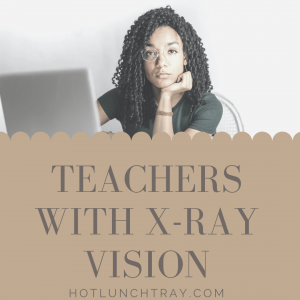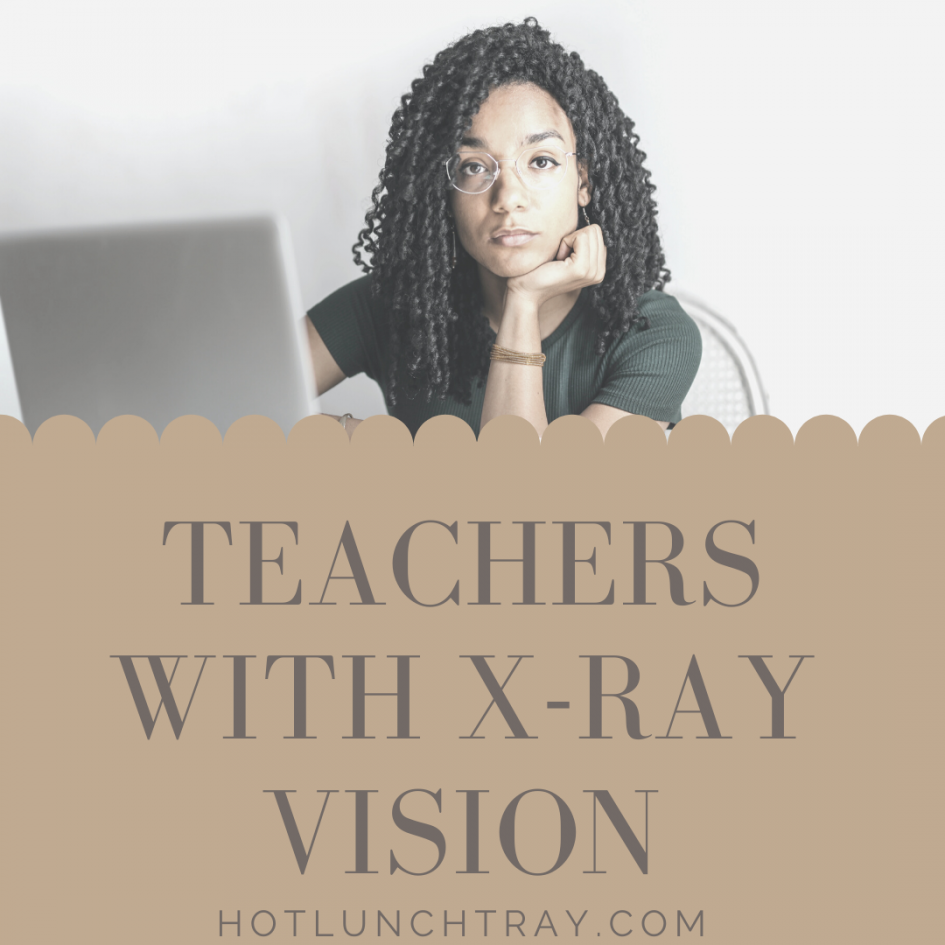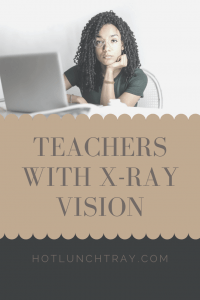At the end of the fall semester of 2020, teachers with x-ray vision did the best in this new format. You may have only just discovered this superpower in some of your teachers, so it is worth a discussion.

Content
Teachers either provided their own content or the content for online instruction was provided for them. If teachers used their own content they had an idea of the outcomes, areas of difficulty for past students. They concentrated on translated those difficulties not just to a traditional understanding, but also offered new, online ways for students to understand.
Teachers with content provided to them had a different job. Content provided to teachers was likely new and the teacher had to stay a few days ahead, find the new resources, identify potential stumbling blocks, and build bridges for any difficulties. The teachers with new content had to use their x-ray vision to look past the new content and look for the same issues they encountered with traditional schooling: stumbling blocks, how to provide bridges, and now how to assess differently.
Assessments
The best assessment in a new setting with the fewest constraints was verbal, informal assessment. And the teachers with x-ray vision adapted to the new reality. Instead of trying to proctor traditional assessment items via an uncertain and stressful process, s/he talked with a student one-on-one or in small groups to give credit for what s/he could observe and move on what was (realistically) unobservable. If a teacher already had to guess for the assessment there was already no point and the teachers with x-ray vision knew that and didn’t waste his/her time nor frustrate the student.
Students
The teacher with x-ray vision didn’t chase students as a debt collector for missing work. Instead, she adhered to a system of notification of parents and students and did not take absences, missing work, or late work personally. For a million reasons school work was not getting done, and s/he knew most of it didn’t have to do with him/her. It would have ruined the relationship, the culture of the class, or a parent/student’s day to receive harassing emails/phone calls; so instead a teacher with x-ray vision relied on the established ways of communicating about missing work. A weekly or as-needed call or email home to request some help, to give direction, to motivate. But never to play gotcha, humiliate, or hysterically demand.
More Teachers with X-ray Vision
X-ray vision was important in the traditional classroom, teachers had to look past a new curriculum, new standardized tests, new administrators, but now the emotional level is heightened and families are struggling in new ways. Teachers with x-ray vision can see the whole ocean instead of the current waves. Teachers with x-ray vision help steady other teachers by pointing out the constant tasks of teachers – even in new situations. The teachers who calm the students and their families into remembering that learning is still learning, and they are capable of learning even in “times like these.” Those are the teacher with x-ray vision – and we need more of them right now.







2020-12-30 at 7:11 am
I love this perspective. Teachers are such a big influence in our world and having teachers that can look beyond the little things is so important. Being understanding and willing to work with parents and students so everyone is successful is such a super power.
2021-01-04 at 12:51 pm
Agreed! Such a vital part of things, and so under appreciated. The skills needed to make their jobs particularly effective right now are even more nurturing and… focused, I suppose, on each individual, at times, than they used to have to be. And knowing when that focus is needed seems to be half the battle.
(My dad is an English teacher and has transitioned to being fully on-line, and on Zoom, this year. It’s been fun to help!)